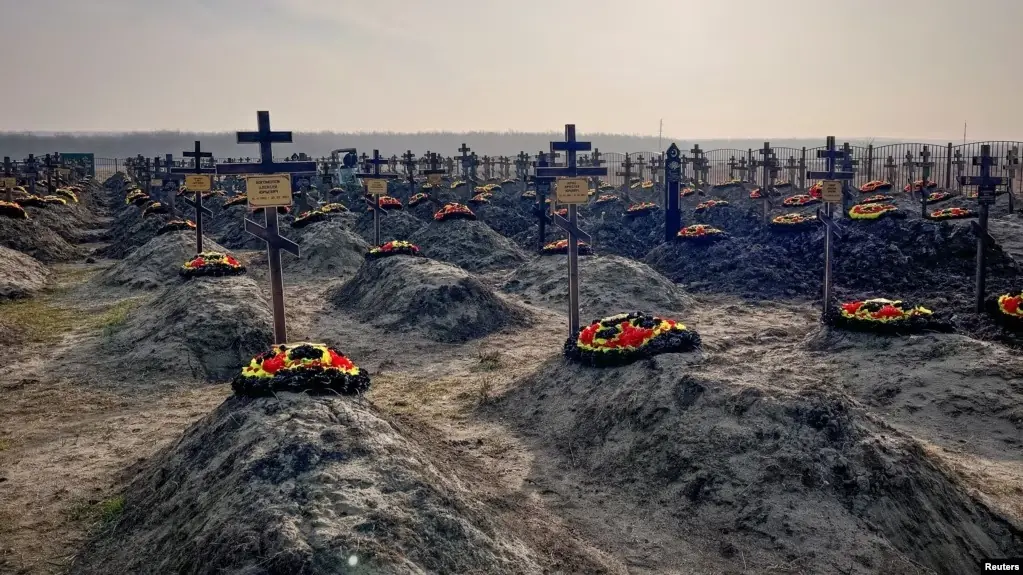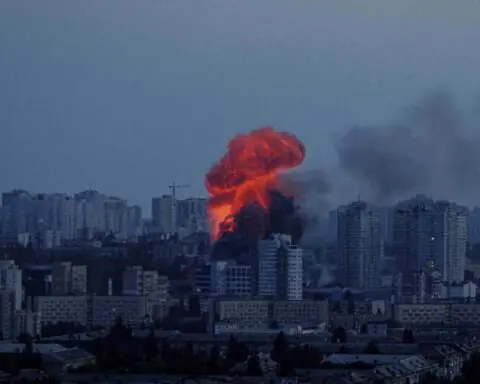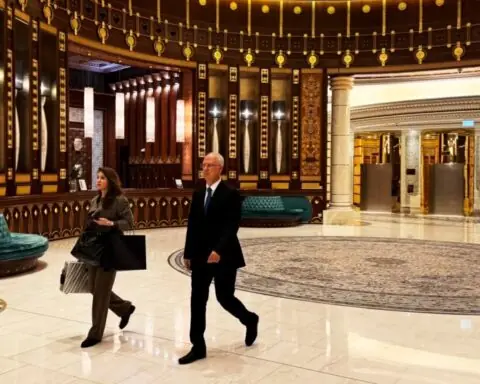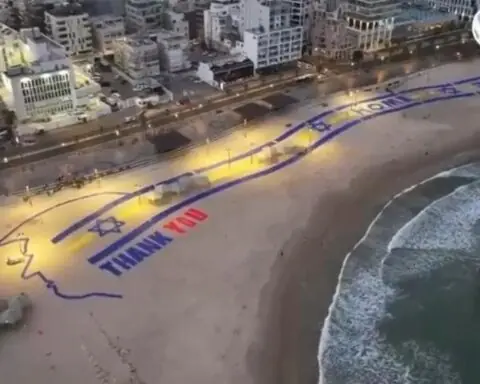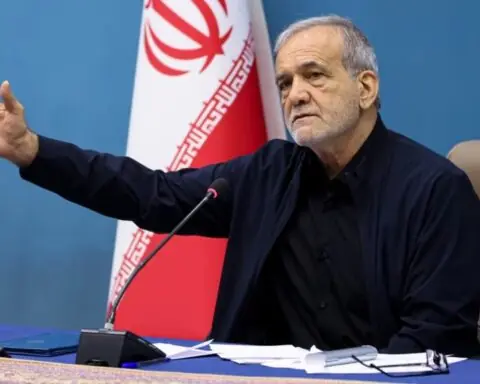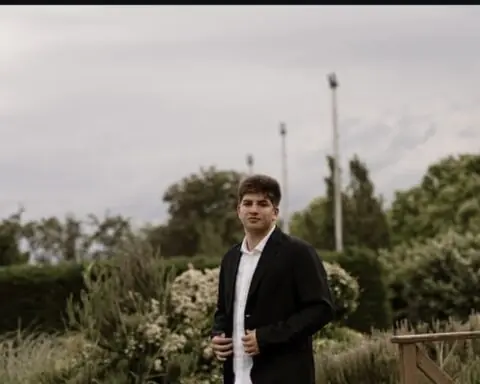The first time that Vitaly Votanovsky was contacted to find out the fate of someone fighting in Ukraine for the notorious Wagner mercenary group was in November 2022.
He received a Telegram message from the aunt of 22-year-old Andrei Kargin saying that she hadn’t heard from her nephew for months since he deployed to Ukraine as part of the Russian group, and she was beginning to wonder what fate he had met. She filled out all the necessary paperwork to be contacted in the event of his death, but had received no word from Wagner. Desperate, she reached out to Votanovsky, a well-known local blogger and activist based in Russia’s North Caucasus who had been investigating the true death toll of Moscow’s yearlong invasion.
By the end of February, Votanovsky had found Kargin’s grave in Russia at a special cemetery for Wagner fighters killed in Ukraine. His aunt had never been contacted by Wagner to let her know that her nephew had been killed or if she wanted to attend a funeral. The only news she received was a photo taken by Votanovsky.
Since then, Votanovsky has been contacted by numerous families about the fate of their relatives fighting as mercenaries for Wagner in Ukraine.
He told RFE/RL’s Caucasus.Realities, a regional news outlet of RFE/RL’s North Caucasus Service, that since he began tracking the graves of those killed in Ukraine, he’s found relatives for families across southern Russia, such as cities like Stavropol and Volgograd, and even as far away as Belarus and Kazakhstan. In most cases, the families had not been informed of the deaths and only discovered that their relatives were no longer alive after someone had discovered one of Votanovsky’s photos on his Telegram channel.

“Only in one case was the wife informed that the fighter had died…the rest didn’t even know,” Votanovsky said during an interview. “During my last trip, I found many graves with nonstandard black-and-yellow wreaths — and many relatives found out about their loved ones [that way].”
Those black-and-yellow wreaths have become a symbol for the graves of Wagner fighters killed in Ukraine. The mercenary group has suffered heavy casualties of late, especially in recent months as grinding battles have raged in eastern Ukrainian towns and cities like Soledar and Bakhmut.
Special Cemeteries
In order to accommodate all the bodies, Wagner has built special cemeteries for its slain fighters, many of whom are believed to be inmates who were recruited to fight in exchange for being released from prison. Votanovsky first discovered the sprawling Wagner cemetery in December in the village of Bakinskaya located within the Krasnodar region in southwestern Russia.
In addition to commuting their sentence, part of the recruiting pitch made publicly — and seen on leaked video footage — by Wagner boss Yevgeny Prigozhin is also that a designated family member will receive a cash payment should they be killed fighting in Ukraine. Advocacy groups say prisoners who enlisted were told their families would receive a payout of 5 million rubles ($71,000) if they were killed.
But Votanovsky says that, based on his growing interactions with family members whose relatives have died fighting for Wagner in Ukraine, many are not being informed about deaths and the promised payouts are not being delivered, which he speculates may be a deliberate move by the mercenary group.
“Of course, it’s easier for Wagner to bury all those taken out in one place than to deal with the complex logistics and transport for corpses around [Russia] and even to neighboring countries,” Votanovsky said. “But this also demonstrates their real attitude toward both the dead and their families.”
‘Out of Prison For Slaughter’
The exact reason for family members not being notified is not known.
In interviews RFE/RL conducted with experts, activists, former Wagner mercenaries, and family members of fighters who were killed, some have theorized that it could result from poor organization, a concern over the financial cost for the company given the mounting battlefield casualties suffered in recent months, or other practicalities resulting from the war and the heavy recruitment of inmates.
According to Vladimir Osechkin, the founder of Gulagu.net, a Russian human rights organization focusing on the country’s prison system, the main reason why family members are not being informed and paid is that the fighters, especially those recruited from prisons, are seen as expendable.
He says that, based on his organization’s research, Wagner recruits are often deceived about the purported financial benefits and the lack of communication or delivery of promised payments is the latest development from a system where “Prigozhin was given the right and opportunity to take anyone out of prison for slaughter.”
Yana Gelmel, a lawyer with the In Defense of the Rights of Prisoners Foundation, adds that other factors could also be contributing to the lack of payments beyond an unwillingness on the part of Wagner brass, such as failures to fill out contact forms correctly and some recruits not wanting to tell their family members that they had signed up to fight in Ukraine.
RFE/RL spoke with seven separate family members who contacted Votanovsky and it reviewed his conversations with them. They asked for some identifying details to be withheld in order to prevent legal or other repercussions from Russian authorities.

In one case, the wife of a slain mercenary says that she has not received any of the payments touted by Prigozhin. Despite signing a power of attorney for her husband before he deployed, her legal attempts to claim compensation have been ignored and she says that she only learned about her husband’s death through Votanovsky’s channel.
Another woman whose husband was killed fighting for Wagner said that she was told that she could not attend the funeral and was asked to visit the grave at a later date.
One woman whose relative was killed in Ukraine after being recruited from prison says that she has written to the Russian Defense Ministry and to the correctional colony where her relative was serving time, but has had no response.
In the other cases, the relatives said that they had launched appeals to Wagner and the Defense Ministry, but have not received replies.
‘Cannon Fodder’
U.S. government estimates say some 50,000 Wagner mercenaries have been sent to the war in Ukraine and 30,000 have since been killed or injured.
Andrei Medvedev, a former Wagner commander in Ukraine who later fled to Norway and has applied for political asylum, told RFE/RL that the difficulties with sending payments to the families of dead fighters largely stems from the mercenary company suffering huge losses and it being financially unrealistic for it to transfer money to each one.
“[The fighters] have been treated like cannon fodder,” Medvedev said. “There are too many corpses and there just isn’t enough money [to pay everyone].”

The former mercenary added that, despite the growing number of relatives left in the dark, Wagner does inform some families, saying that to not do so at all would harm the company’s reputation inside Russia.
But he says that more and more families are unlikely to receive their promised payouts considering the growing losses Wagner is facing.
While still fighting with the mercenary group, Medvedev said that he witnessed cases where many soldiers were buried on the spot after being killed in combat and then listed as missing by a commanding officer.
In one episode, he said that a friend from the mercenary group was killed in front of a Ukrainian position and that his superior said that his family would not receive compensation because the man’s body couldn’t be sent back to Russia.
“No body, no payment. The commander immediately said that the family would not receive money without a body,” Medvedev said. “I had to lead a group there to get him so that his body could be sent home.”




